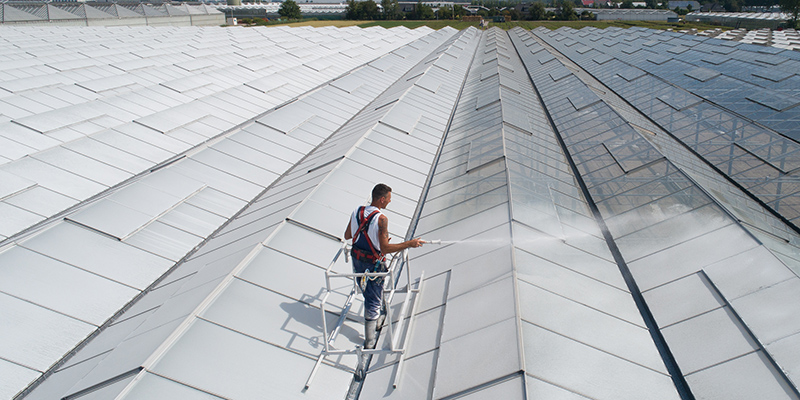Cannabis Crop Steering: Buzzword or Bona Fide Growing Technique?
Crop steering is a cultivation method that utilizes environmental and irrigation influences to drive a crop towards either vegetative or generative growth. It’s a technique initially used by greenhouse produce growers to help them strike the right balance between plant growth and vegetable production.
This balance is critical to ensuring an efficient and profitable crop. If a tomato plant stays too vegetative, it will set fewer flowers and produce fewer tomatoes over its lifetime. The money invested into labor, nutrients, and climate control will be largely wasted since growers can’t sell tomato leaves.
On the other hand, a tomato plant that sets fruit too early won’t grow as tall or as fast, ultimately compromising its overall yield.
The Technology
Can crop steering really help cannabis growers, considering that the flowering cycle is triggered by photoperiodic responses, not irrigation, fertilizer, or humidity clues? According to Seth Baumgartner, client success manager at Aroya, the answer is absolutely.
Aroya is a software and sensor company that collects data and provides cultivators with insights to help steer their cannabis crops toward the desired type of plant growth.
Instead of relying on singular factors like water content or electrical conductivity, the Aroya platform utilizes multiple sensors to paint a more comprehensive picture of the complete grow environment. This allows growers to fine-tune their cultivation program for production efficiency.
The secret, according to Baumgartner, is to provide the plant with vegetative or generative “clues” at specific points throughout the crop cycle.
Vegetative clues are growing conditions such as lower light and EC levels, higher humidity and water content levels, and warmer root zone temperatures.
The opposite characterizes generative growth clues: higher light and EC levels, lower humidity, decreased irrigation frequency and volume, and cooler root zone temperatures.
“What we do is target individual growth phases,” Baumgartner says. “During stretch, we’re leaning more generative, trying to control the height and encourage the plant to put on more nodes. Once stretch is done, we’ll switch to vegetative steering to bulk the biomass of those buds up.”
Timing is vital for crop steering to work.
“The fine line is, where do you stop bulking?” asks Baumgartner. “How hard do you hit it vegetatively to not just blow up the bud but also retain quality?”
”Part of that comes down to ripening,” he explains, “where we flip back to generative, try not to bulk up anymore, and really have that plant focus on resin and terpene production at that point, usually the last two to three weeks of flower.”
Aroya provides guidance for these adjustments based on data the platform collects in real-time.
“Every three minutes, you’re getting volumetric water content, substrate EC, air temp, RH, VPD, substrate temp, and DLI for greenhouse growers,” explains Baumgartner.
This data, and the subsequent insights, can help growers to make necessary modifications proactively.
The result? Increased yields, according to Baumgartner.
“If you can maintain humidity, VPD, and light levels, we can usually take you from 40 to 80 grams a square foot, no problem.”
The All-in-One Solution
Although Aroya collects and helps cultivators analyze data, growers must then turn to their fertigation computer or environmental control system to make the recommended modifications.
A more efficient method would be a system that monitors and analyzes data and automatically makes the recommended modifications in real-time.
Horticulture tech company Growlink has answered that call.
“Growlink has the advantage of being able to take actions based on the data we see,” says Sales Executive David Goodnack.
Growlink sells fertigation and environmental control software and all the sensors needed to establish an in-depth crop steering program. Goodnack is already looking forward to the next iteration of the company’s technology platform.
“Our crop steering 2.0 release will take this even further with some AI and machine learning features that will allow Growlink to be smarter, and smarter about the actions we are taking,” says Goodnack.
The company offers a free, 77-page comprehensive crop steering guide for growers who want to learn more about this cultivation technique.
A Grower’s Perspective
John Dol, the founder of CannabiDol Consult and Design, began crop steering with hydroponic vegetable crops and now helps cannabis cultivators benefit from this growing approach.
“The reason we started doing crop steering with produce was to get higher yields, and it took a long time to learn the intricacies,” Dol says. “Crop steering is really a combination of climate influences and irrigation influences.
“During generative growth, you want to have cooler temperatures than in vegetative growth,” says Dol. “You also want to have higher humidity for your vegetative growth and a somewhat lower humidity for your generative growth.”
Dol also recommends steering crops by using lower CO2 levels for the vegetative period and higher levels for flowering.
“These are all inputs that we know have impacts on how the plant grows,” says Dol. “Those are the kind of levers that you want to pull with crop steering from a climate position.
“If you let a plant do what the plant wants to do, you get a result,” he says. “But if you want to get the best result out of the square footage of your grow, you have to manipulate the plant to get it to do what you want it to do.”
The photoperiodic nature of cannabis ensures that vegetative influences during the generative period won’t counteract the plant’s ability to produce flowers. Instead, these clues provide the extra drive to maximize the plant’s potential.
However, Dol warns that one of the biggest challenges to cannabis crop steering is the number of varieties in a typical grow room.
“If you have four strains in a room, and you have one strain that is staying short and stalky that you want to push more to stretch, you can’t do that because all the other varieties in that room will be doing the same thing.”
Establishing different irrigation zones can help growers steer crops via customized irrigation strategies for each variety, but if they’re all in the same room, there’s not much cultivators can do to provide different temperatures, humidity, and CO2 levels for each variety.
More than a buzzword, crop steering has the potential to help cannabis growers maximize their yields through subtle yet precise environmental and irrigation clues.
If you’re interested in exploring this cultivation technique, skip the guesswork and learn from a pro. Crop steering can’t be used for every growing situation, but with the right technology and guidance, you may find this technique can help steer you toward your most profitable crop yet.









